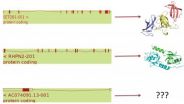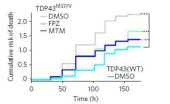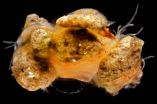(Press-News.org) How nutrients are metabolised and how neurons communicate in the brain are just some of the messages coded by the 3 billion letters that make up the human genome. The detection and characterisation of the genes present in this mass of information is a complex task that has been a source of ongoing debate since the first systematic attempts by the Human Genome Project more than ten years ago.
A study led by Alfonso Valencia, Vice-Director of Basic Research at the Spanish National Cancer Research Centre (CNIO) and head of the Structural Computational Biology Group, and Michael Tress, researcher at the Group, updates the number of human genes –those that can generate proteins– to 19,000; 1,700 fewer than the genes in the most recent annotation, and well below the initial estimations of 100,000 genes. The work, published in the journal Human Molecular Genetics, concludes that almost all of these genes have ancestors prior to the appearance of primates 50 million years ago.
"The shrinking human genome," that's how Valencia describes the continuous corrections to the numbers of the protein-coding genes in the human genome over the years that has culminated in the approximately 19,000 human genes described in the present work. "The coding part of the genome [which produces proteins] is constantly moving," he adds: "No one could have imagined a few years ago that such a small number of genes could make something so complex."
The scientists began by analysing proteomics experiments; proteomics is the most powerful tool to detect protein molecules. In order to determine a map of human proteins the researchers integrated data from seven large-scale mass spectrometry studies, from more than 50 human tissues, "in order to verify which genes really do produce proteins " says Valencia.
FEWER THAN TEN NEW GENES SEPARATE MICE AND MEN
The results brought to light just over 12,000 proteins and the researchers mapped these proteins to the corresponding regions of the genome. They analysed thousands of genes that were annotated in the human genome, but that did not appear in the proteomics analysis and concluded: "1,700 of the genes that are supposed to produce proteins almost certainly do not for various reasons, either because they do not exhibit any protein coding features, or because the conservation of their reading frames does not support protein coding ability, "says Tress.
One hypothesis derived from the study is that more than 90% of human genes produce proteins that originated in metazoans or multicellular organisms of the animal kingdom hundreds of millions of years ago; the figure is over 99% for those genes whose origin predates the emergence of primates 50 million years ago.
"Our figures indicate that the differences between humans and primates at the level of genes and proteins are very small," say the researchers. David Juan, author and researcher in the Valencia lab, says that "the number of new genes that separate humans from mice [those genes that have evolved since the split from primates] may even be fewer than ten." This contrasts with the more than 500 human genes with origins since primates that can be found in the current annotation. The researchers conclude: "The physiological and developmental differences between primates are likely to be caused by gene regulation rather than by differences in the basic functions of the proteins in question."
DOING MORE WITH LESS
The sources of human complexity lie more in how genes are used rather than on the number of genes, in the thousands of chemical changes that occur in proteins or in the control of the production of these proteins by non-coding regions of the genome, which comprise 90% of the entire genome and which have been described in the latest findings of the international ENCODE project, a Project in which the Valencia team participates.
The work brings the number of human genes closer to other species such as the nematode worms Caenorhabditis elegans, worms that are just 1mm long, but apparently less complex than humans. But Valencia prefers not to make comparisons: "The human genome is the best annotated, but we still believe that 1,700 genes may have to be re-annotated. Our work suggests that we will have to redo the calculations for all genomes, not only the human genome."
The research results are part of GENCODE, a consortium which is integrated into the ENCODE Project and formed by research groups from around the world, including the Valencia team, whose task is to provide an annotation of all the gene-based elements in the human genome.
"Our data are being discussed by GENCODE for incorporation into the new annotations. When this happens it will redefine the entire mapping of the human genome, and how it is used in macro projects such as those for cancer genome analysis ", says Valencia.
INFORMATION:
The study is the result of a multidisciplinary collaboration based on state of the art bioinformatics, genetic and proteomic analyses, and involved researchers from the Spanish National Cardiovascular Research Centre (CNIC), as well as from the Welcome Trust Sanger Institute in Cambridge, UK, and the University of California Santa Cruz in the USA.
A CNIO team reduces the size of the human genome to 19,000 genes
Over 99% of human protein coding genes have an origin that predates primates by over 50 million years. The study questions the genomic annotations of many different species
2014-07-03
ELSE PRESS RELEASES FROM THIS DATE:
Could boosting brain cells' appetites fight disease? New research shows promise
2014-07-03
ANN ARBOR, Mich. — Deep inside the brains of people with dementia and Lou Gehrig's disease, globs of abnormal protein gum up the inner workings of brain cells – dooming them to an early death.
But boosting those cells' natural ability to clean up those clogs might hold the key to better treatment for such conditions.
That's the key finding of new research from a University of Michigan Medical School physician scientist and his colleagues in California and the United Kingdom. They reported their latest findings this week in the journal Nature Chemical Biology.
Though ...
Ironing out details of the carbon cycle
2014-07-03
Iron is present in tiny concentrations in seawater. On the order of a few billionths of a gram in a liter.
"I did a calculation once on a ton of ocean water," says Seth John, an assistant professor in the department of marine science at the University of South Carolina. "The amount of iron in that ton of water would weigh about as much as a single eyelash."
Given that there is so little iron in seawater, one might conclude that its presence there is inconsequential.
Hardly. Iron is one of the essential elements of life. Found in enzymes like myoglobin and hemoglobin ...
Science Elements podcast highlights the science of fireworks
2014-07-03
The July feature of Science Elements, the American Chemical Society's (ACS') weekly podcast series, shines the spotlight on the science of fireworks, just in time for the July 4th holiday. The episode is available at http://www.acs.org/scienceelements.
Independence Day is a time for picnics, parades and, of course, fireworks. Those beautiful explosions in the sky would be nothing without chemistry. In today's episode, Science Elements talks to the man who literally wrote the book on fireworks.
"Everything you see in a fireworks display is chemistry in action," says ...
Decade of benefits for the Great Barrier Reef
2014-07-03
With this week marking the tenth anniversary of the rezoning of the Great Barrier Reef Marine Park, prominent marine scientists from around the world have gathered in Canberra to discuss its successes - both expected and unexpected.
"At the time, the rezoning of the Great Barrier Reef Marine Park was the largest marine conservation measure in the world," says Professor Garry Russ from the ARC Centre of Excellence for Coral Reef Studies (Coral CoE). "The Reef went from being five percent protected to about 30 percent. So now, a third of it is green, or no-take, zones."
Designed ...
Lessons from the west: Great Barrier Reef in danger
2014-07-03
Scientists at a coral reef symposium in Canberra this week are examining degraded reefs off the Northwest Australian coast in an effort to determine what lies ahead for the Great Barrier Reef.
"Reefs north of Exmouth have experienced large-scale bleaching in the past five years," says Professor Malcolm McCulloch from the ARC Centre of Excellence for Coral Reef Studies (Coral CoE) at the University of Western Australia.
McCulloch is in the midst of an autopsy of this Pilbara bleaching event, collecting and analysing both living and dead stony coral. He says the bleaching ...
Forecasting the development of breakthrough technologies to enable novel space missions
2014-07-03
A new report, Technological Breakthroughs for Scientific Progress (TECHBREAK), has been published today by the European Science Foundation.
The European Science Foundation (ESF) was contacted at the end of 2009 to conduct a foresight activity for the European Space Agency (ESA), addressing the matter of technological breakthroughs for space originating in the non-space sector. A "Forward Look" project jointly funded by ESA and ESF and called 'TECHBREAK' was initiated as a result. Its goals were to forecast the development of such breakthrough technologies to enable novel ...
Researchers from the UCA prove the existence of large accumulations of plastic in all of the oceans
2014-07-03
Researchers from the University of Cadiz have made an unprecedented discovery: they have shown that there are five large accumulations of plastic debris in the open oceans, coinciding with the five main ocean gyres in the surface waters of the ocean. As well as the well-known accumulation of plastic rubbish in the North Pacific, these experts have proven the existence of similar accumulations in the centre of the North Atlantic, the South Pacific, the South Atlantic and the Indian Oceans. And they have gone one step further to state that the surface water of the centre ...
'Work environment' affects protein properties
2014-07-03
Under the tutelage of Junior Professor Dr Simon Ebbinghaus, researchers from Bochum have demonstrated that the water surrounding the dissolved substances inside the cell plays a crucial role with regard to protein stability, which has frequently been neglected in the past. The researchers have published the results of their study, gained by means of simple model systems and thermodynamic analyses, in the Journal of the American Chemical Society (JACS). The results have been obtained following a collaboration under the umbrella of the Excellence Cluster RESOLV. The researchers ...
Groovy giraffes…distinct bone structures keep these animals upright
2014-07-03
Researchers at the Royal Veterinary College have identified a highly specialised ligament structure that is thought to prevent giraffes' legs from collapsing under the immense weight of these animals.
"Giraffes are heavy animals (around 1000 kg), but have unusually skinny limb bones for an animal of this size" explained lead investigator Christ Basu, a PhD student in the Structure & Motion Lab. "This means their leg bones are under high levels of mechanical stress."
In giraffes, the equivalents to our metatarsal bone (in the foot) and metacarpal bone (in the hand) are ...
Surprisingly stable long-distance relationships
2014-07-03
Contrary to what was thought, sequences of DNA called enhancers – which control a gene's output – find their targets long before they are activated during embryonic development, scientists at the European Molecular Biology Laboratory (EMBL) in Heidelberg, Germany, have found. Their study, published online today in Nature, also reveals that, surprisingly, the degree of complexity of enhancers' interactions in the 'simple' fruit fly Drosophila is comparable to what is seen in vertebrates.
"As an embryo develops, there are huge changes in transcription, much of which drives ...
LAST 30 PRESS RELEASES:
Corporate social responsibility acts as an insurance policy when companies cut jobs and benefits during the times of crisis
Study finds gender gap in knee injuries
First ‘Bible map’ published 500 years ago still influences how we think about borders
Why metabolism matters in Fanconi anemia
Caribbean rainfall driven by shifting long-term patterns in the Atlantic high-pressure system, study finds
Potential treatment to bypass resistance in deadly childhood cancer
RSV vaccines could offer protection against asthma
Group 13 elements: the lucky number for sustainable redox agents?
Africa’s forests have switched from absorbing to emitting carbon, new study finds
Scientists develop plastics that can break down, tackling pollution
What is that dog taking? CBD supplements could make dogs less aggressive over time, study finds
Reducing human effort in rating software
Robots that rethink: A SMU project on self-adaptive embodied AI
Collaborating for improved governance
The 'black box' of nursing talent’s ebb and flow
Leading global tax research from Singapore: The strategic partnership between SMU and the Tax Academy of Singapore
SMU and South Korea to create seminal AI deepfake detection tool
Strengthening international scientific collaboration: Diamond to host SESAME delegation from Jordan
Air pollution may reduce health benefits of exercise
Ancient DNA reveals a North African origin and late dispersal of domestic cats
Inhibiting a master regulator of aging regenerates joint cartilage in mice
Metronome-trained monkeys can tap to the beat of human music
Platform-independent experiment shows tweaking X’s feed can alter political attitudes
Satellite data reveal the seasonal dynamics and vulnerabilities of Earth’s glaciers
Social media research tool can lower political temperature. It could also lead to more user control over algorithms.
Bird flu viruses are resistant to fever, making them a major threat to humans
Study: New protocol for Treg expansion uses targeted immunotherapy to reduce transplant complications
Psychology: Instagram users overestimate social media addiction
Climate change: Major droughts linked to ancient Indus Valley Civilization’s collapse
Hematological and biochemical serum markers in breast cancer: Diagnostic, therapeutic, and prognostic significance
[Press-News.org] A CNIO team reduces the size of the human genome to 19,000 genesOver 99% of human protein coding genes have an origin that predates primates by over 50 million years. The study questions the genomic annotations of many different species



